Typeerror: ‘Int’ Object Is Not Iterable
What is a TypeError?
A TypeError is an error that occurs when you try to perform an operation on a value that is of an incompatible type. This type of error typically happens when you try to use an object or variable in a way that it was not designed for. In Python, a common TypeError is the “‘int’ object is not iterable” error.
What is an iterable object?
An iterable object is an object that can be looped over or iterated. It is a general term used to describe any object that can return its elements one at a time. Some examples of iterable objects in Python include lists, tuples, strings, and dictionaries. These objects have a specific method called “__iter__()” that allows them to be used in loops or iteration.
Understanding the Error Message
When you encounter the TypeError: ‘int’ object is not iterable, it means that you are trying to iterate over an integer object. In other words, you are treating an integer value as if it is a collection of items that can be looped over, but integers are not iterable objects. The error message is Python’s way of letting you know that you are using the wrong type of object in your code.
Example of the TypeError: ‘int’ object is not iterable
Here is an example that demonstrates the TypeError: ‘int’ object is not iterable:
“`python
num = 42
for digit in num:
print(digit)
“`
In this example, we are trying to loop over the variable `num`, which is an integer. However, integers are not iterable, so Python raises a TypeError. To fix this error, we need to use an iterable object instead.
Common Causes of the TypeError
There are several common causes for the TypeError: ‘int’ object is not iterable:
1. Trying to iterate over an integer: As shown in the example above, attempting to loop over an integer will raise this error.
2. Incorrect use of a loop or iteration: If you mistakenly use an iterable object in the wrong way, such as trying to access its elements without iterating over it, you may encounter this error.
3. Passing an integer to a function or method that expects an iterable: If a function or method expects an iterable object as an argument, but you pass an integer instead, you will see this error.
How to Fix the TypeError
To fix the TypeError: ‘int’ object is not iterable, you need to determine the cause of the error and make the necessary changes to your code. Here are a few solutions:
1. Check your code for incorrect iteration: Double-check any loops or iterations in your code to ensure that you are using the correct objects. If you encounter an integer in a loop, it may need to be replaced with an iterable object.
2. Convert the integer to an iterable object: If you want to iterate over a single integer, you can convert it to an iterable object, such as a list or string, using built-in functions like `str()` or `list()`. For example:
“`python
num = 42
digits = list(str(num))
for digit in digits:
print(digit)
“`
3. Use the appropriate object: If you mistakenly passed an integer to a function or method that expects an iterable, make sure to pass the correct iterable object instead.
Alternative Solutions
In some cases, you may need to rethink your approach and consider alternative solutions:
1. Use a different data type: If you find yourself frequently encountering the TypeError: ‘int’ object is not iterable, it might be worth considering if using a different data type, such as a list or tuple, would better suit your needs.
2. Validate inputs: Implement input validation to ensure that you are always receiving the expected data types. This can help catch errors before they occur and prevent the TypeError from happening in the first place.
Preventing the TypeError from occurring again
To prevent the TypeError: ‘int’ object is not iterable from occurring again in your code, you can follow these best practices:
1. Double-check your code: Always review your code for any potential errors or incorrect use of objects before running it. This can help identify and fix any issues that may lead to the TypeError.
2. Use descriptive variable names: By choosing descriptive variable names, you can minimize the risk of mistakenly using an integer where an iterable object is expected.
3. Test your code: Regularly test your code using various scenarios and inputs to catch any potential issues or errors. This can help you identify and fix any TypeError problems early on.
FAQs
Q: What does ‘int’ object is not iterable mean?
A: It means that you are trying to iterate over an integer object, which is not allowed because integers are not iterable.
Q: Can integers be iterable in Python?
A: No, integers are not iterables. They are single values and cannot be looped over directly.
Q: How do I convert an integer to an iterable object?
A: You can convert an integer to an iterable object, such as a list or string, using built-in functions like `str()` or `list()`. For example, `list(str(42))` will convert the integer 42 to a list with two elements [‘4’, ‘2’].
Q: What are some common causes of the TypeError: ‘int’ object is not iterable?
A: Some common causes include trying to iterate over an integer, incorrect use of a loop or iteration, and passing an integer to a function or method that expects an iterable.
Q: How can I prevent the TypeError: ‘int’ object is not iterable from happening again?
A: You can prevent this error by double-checking your code for any incorrect use of objects, using descriptive variable names, and regularly testing your code with different scenarios. Additionally, implementing input validation can help catch errors before they occur.
Typeerror Int Object Is Not Iterable | Int Object Is Not Iterable | In Python | Neeraj Sharma
Why My Object Is Not Iterable In Python?
Python is a versatile and powerful programming language known for its simplicity and readability. One of its key features is its support for iterators and iterables, which allow for efficient and elegant data handling. However, it is not uncommon for Python developers to encounter situations where their object is not iterable. In this article, we will explore the reasons behind this issue and delve into potential solutions.
To understand why an object is not iterable in Python, it is important to first grasp the concept of iterable objects. In Python, an iterable is any object that can be looped over using a for loop. Common examples of iterable objects include lists, tuples, strings, and dictionaries. These objects can be iterated using the `for` keyword, along with other functions and methods that work on iterables.
Now, if you encounter a scenario where you receive an error message stating that your object is not iterable, it means that the specific object does not adhere to the iterable protocol. There can be several reasons why an object may not be iterable in Python, so let’s explore some of the most common ones:
1. Missing __iter__ or __getitem__ method: For an object to be iterable, it must have either the `__iter__` or the `__getitem__` method defined. The `__iter__` method is typically used for creating iterators, while the `__getitem__` method allows for accessing elements by index. If either of these methods is missing, the object will not be iterable.
2. Immutable objects: Immutable objects, such as integers, floats, and tuples, cannot be modified once created. Since iteration often involves modifying the state of an object, immutable objects are not designed to be iterable. However, components of an immutable object, like a tuple, can still be iterated individually.
3. Empty objects: An object that contains no data or elements is often a cause for objects not being iterable. An empty object lacks the necessary elements to be looped over, resulting in a ‘not iterable’ error. It is crucial to ensure that your object has content or elements before attempting iteration.
4. Custom objects: If you have defined a custom class or object, it may not inherently support iteration, even if it contains elements. In such cases, you can customize your class to implement the iterable protocol by adding the `__iter__` or `__getitem__` methods. These methods should return an iterator object, enabling iteration over the elements of your custom object.
Now that we have explored the reasons why an object may not be iterable in Python, let’s address some frequently asked questions related to this topic:
Q1: How can I check if an object is iterable?
A: To check if an object is iterable, you can use the `iter()` function. It attempts to convert an object into an iterator and raises a `TypeError` if the object is not iterable. Alternatively, you can use the `collections.abc.Iterable` abstract base class and its `isinstance()` method to check for iterability.
Q2: Can I make an object iterable without modifying the source code?
A: Yes, you can make an object iterable without altering its source code by creating a wrapper class or using a decorator. By creating a wrapper class, you can define the `__iter__` or `__getitem__` methods for the object and make it iterable. Additionally, you can use a decorator, like `@functools.singledispatch`, to add iterable behavior to an existing class.
Q3: What should I do if my object is not iterable?
A: If your object is not iterable, you have several options. You can modify your object’s class to support iteration by implementing the `__iter__` or `__getitem__` methods. Alternatively, you can convert your object into an iterable using functions like `iter()` or `list()`. Finally, you can wrap your object in a wrapper class or use a decorator to make it iterable.
Q4: Is there a built-in function to make any object iterable?
A: No, there is no universal built-in function that can make any object iterable. Each object has its own rules and requirements for iterability. However, by following the Python iterable protocol and adapting your object accordingly, you can enable iteration for various types of objects.
In conclusion, encountering an object that is not iterable in Python can be frustrating, but with a solid understanding of the iterable protocol and potential reasons behind the issue, you can overcome this challenge. By addressing missing methods, considering object mutability, verifying content, and customizing classes, you can make your objects iterable and enjoy the benefits of efficient data handling in Python.
What Is The Error Of Int () In Python?
Python, being a highly versatile and dynamic programming language, offers a vast range of built-in functions that make developers’ lives easier. One such function is int(), which converts a given value into an integer data type. Despite its simplicity, sometimes int() can throw an error, as it has certain limitations and requirements that need to be understood and managed appropriately. In this comprehensive article, we will delve into the various scenarios where int() might result in an error and discuss potential solutions. So, let’s explore the intricacies of int() in Python.
Understanding the int() Function:
The int() function in Python is primarily used to convert a value into an integer. Its general syntax is as follows:
int(x, base=10)
Here, ‘x’ represents the value that we want to convert into an integer, and ‘base’ indicates the numerical base to interpret the input string. By default, base is set to 10, allowing int() to perform standard decimal conversion. However, it can also accept values from 2 to 36, enabling conversions with different numeric bases.
Common Errors of int() in Python:
1. ValueError:
ValueError is the most common error encountered when using int(). It occurs when the provided value cannot be converted into an integer. This error typically arises due to the following reasons:
– Non-numeric input: If the input provided to int() is a non-numeric string (e.g., “abc” or “xyz”), it will result in a ValueError.
– Floating-point numbers: It is important to note that int() can only handle integers. Hence, when floating-point numbers like 3.14 or 2.71828 are passed, a ValueError will be raised.
– Strings with leading or trailing whitespace: In cases where the input string contains leading or trailing whitespace, int() will be unable to convert it, resulting in a ValueError.
– Strings with non-digit characters: If the string passed to int() contains non-digit characters, except for a leading plus or minus sign, a ValueError will be thrown.
2. TypeError:
In some cases, int() can also throw a TypeError. This occurs when the input type is incompatible with the function’s requirements. Some potential scenarios leading to a TypeError include:
– Passing multiple arguments: int() expects a single argument, so if more than one argument is provided, a TypeError will be raised.
– Non-string or non-integer input: int() accepts either a string or an integer. If any other data type, such as a list or a dictionary, is passed as an argument, it will raise a TypeError.
FAQs (Frequently Asked Questions):
Q1. How can I handle a ValueError when using int() in Python?
To handle a ValueError, you can use a try-except block. By enclosing the int() function within a try block and catching the exception in an except block, you can prevent the program from crashing. Additionally, you can provide a specific error message or perform alternative actions in the except block based on your requirements.
Q2. How can I convert a floating-point number to an integer using int()?
To convert a floating-point number to an integer using int(), you can pass the number as a string to the function. For example: int(“3.14”) will result in 3. Please note that this method truncates the decimal part instead of rounding the number.
Q3. Can int() handle hexadecimal or binary numbers?
Yes, int() has the flexibility to handle different numeric bases. By providing the appropriate base value as the second argument, you can convert hexadecimal (base 16) and binary (base 2) numbers. For instance, int(“FF”, 16) will produce 255.
Q4. How can I resolve a TypeError when using int() with non-string or non-integer input?
To avoid a TypeError, ensure that you pass either a string or an integer as the argument to int(). If you encounter a different data type, consider utilizing appropriate conversion functions to convert the input to a compatible type before using int().
Q5. Are there any alternatives to int() for converting strings to integers?
Yes, Python provides alternative methods to convert strings to integers. Some common options include using the int() constructor, utilizing the ast module’s literal_eval() function, or applying regular expressions to extract numerical values from strings.
Conclusion:
The int() function in Python is a valuable tool for converting values into integers. However, it is essential to understand the potential errors it can encounter and how to handle them effectively. By familiarizing yourself with the ValueError and TypeError scenarios discussed in this article, you will be better equipped to convert values using int() and ensure smooth execution of your Python programs.
Keywords searched by users: typeerror: ‘int’ object is not iterable typeerror: object is not iterable, Object is not iterable js, Int’ object is not iterable for loop, Int’ object is not subscriptable, Argument of type int is not iterable, TypeError function object is not iterable, Int object is not iterable keras, NoneType’ object is not iterable
Categories: Top 61 Typeerror: ‘Int’ Object Is Not Iterable
See more here: nhanvietluanvan.com
Typeerror: Object Is Not Iterable
When starting your journey as a python programmer, you are bound to experience various error messages along the way. One of the most common and frustrating errors is the “TypeError: object is not iterable.” In this article, we will delve into the depths of this error, discuss its causes, and explore various scenarios where it occurs. Additionally, we will provide some frequently asked questions (FAQs) to further enhance your understanding of this issue.
Understanding the Error:
The “TypeError: object is not iterable” indicates that you are trying to iterate over an object that is not iterable. In python, an object is considered iterable if it can be looped over using a loop construct, such as a for loop or a list comprehension. Iterables include data types like lists, tuples, dictionaries, and strings.
Causes of the “TypeError: object is not iterable”:
1. Forgotten parentheses: One of the most common causes of this error is forgetting to add parentheses after certain functions or methods. For instance, if you mistakenly forget to add parentheses after the input function while trying to create a list, it would result in a TypeError. An example of this error can be seen below:
“`python
my_list = list input(“Enter elements: “) # Forgot to add parentheses after list
“`
To fix this issue, you just need to add parentheses after the input function:
“`python
my_list = list(input(“Enter elements: “)) # Corrected code with parentheses
“`
2. Using incorrect data types: Another cause of this error is attempting to iterate over an object that is not iterable. For example, if you try to loop over an integer or a floating-point number, you will encounter this error. Let’s consider the following code snippet:
“`python
my_number = 42
for digit in my_number:
print(digit)
“`
This code will result in a TypeError since integers are not iterable. To resolve this, you need to ensure that the object you are trying to iterate over is, indeed, iterable.
3. Incorrect usage of range function: In some cases, this error occurs due to misuse of the range function. The range function generates a sequence of numbers that you can iterate over. However, it does not return a list directly. If you mistakenly assume that the range function returns a list and try to iterate over it directly, you will encounter the “TypeError: object is not iterable.” Here’s an example:
“`python
for i in range(5):
print(i)
my_list = list(range)[1, 2, 3, 4]
“`
To fix this issue, you need to call the range function correctly and convert it to a list if required. Corrected code snippet:
“`python
for i in range(5):
print(i)
my_list = list(range(1, 5))
“`
Common Scenarios where “TypeError: object is not iterable” Occurs:
1. Iterating over non-iterable objects: This error often occurs when you try to loop over objects that are not iterable, such as numbers or custom objects that don’t implement the iterable protocol. It is important to know the type of the object you are trying to iterate over to avoid this error.
2. Forgetting to convert strings: Sometimes, you may forget to convert a string to an iterable object before trying to iterate over it. This can happen when you need to split a string into individual characters or words. Here’s an example:
“`python
my_string = “Hello”
for char in my_string:
print(char)
“`
This code snippet will work fine since strings are iterable objects. However, if you mistakenly assume that the string will be split into individual characters, you will encounter the TypeError. To split the string into individual characters, you can convert it to a list:
“`python
my_string = “Hello”
for char in list(my_string):
print(char)
“`
Frequently Asked Questions (FAQs):
Q1. How can I avoid the “TypeError: object is not iterable” error?
To avoid this error, make sure you are iterating over an object that is iterable. Use proper parentheses when calling functions or methods that return iterable objects. Also, verify the data types you are trying to iterate over and ensure they are iterable.
Q2. Why am I getting a “TypeError: object is not iterable” when using a dictionary?
Dictionaries in python are iterable, but they return only their keys by default while iterating. If you want to iterate over both the keys and values of a dictionary, you need to use the `items()` method. Here’s an example:
“`python
my_dict = {‘a’: 1, ‘b’: 2, ‘c’: 3}
for key, value in my_dict.items():
print(key, value)
“`
Q3. Can I make a non-iterable object iterable?
Yes, it is possible to make a non-iterable object iterable by implementing the iterable protocol. This involves defining the `__iter__()` method in your custom object, which should return an iterator object. This iterator object should have a `__next__()` method that provides the next value in the iteration.
In conclusion, the “TypeError: object is not iterable” is a common error in python programming that indicates an attempt to iterate over a non-iterable object. We have discussed various causes of this error and provided solutions to avoid encountering it. By being attentive to the iterable nature of objects and using appropriate syntax, you can ensure a smoother coding experience and overcome this frustrating error.
Object Is Not Iterable Js
To understand this error, we first need to grasp the concept of iterability in JavaScript. An iterable object is any object that can be looped over or iterated upon using certain built-in JavaScript features like for…of loops or the spread operator. Examples of iterable objects include arrays, strings, maps, sets, and even generators.
When you attempt to iterate over an object that is not iterable, JavaScript throws the “Object is not iterable” error. This error typically occurs when you try to use a for…of loop or call a function that expects an iterable object, such as Array.from() or the spread operator, on a non-iterable object.
So, why is the object not iterable? The lack of iterability is often caused by a missing or improperly defined iterator method within the object. The iterator method, denoted by the key symbol [Symbol.iterator], returns an iterator object that defines how the object should be iterated.
To resolve the “Object is not iterable” error, you can either make the object iterable by defining the iterator method, or use alternative methods suited for non-iterable objects.
To make an object iterable, you need to define the [Symbol.iterator] method within the object. This method should return an iterator object that consists of two key functions: next() and done(). The next() function returns the next iteration value, while the done() function determines if the iteration is complete. By implementing these functions, you enable the object to be iterated over using for…of loops or other iterable-related functions.
If modifying the object is not desired or possible, you can convert the object into an iterable form using a variety of alternative methods. For instance, you can use the Array.from() function to convert an object with a length property into an iterable array. Another option is to use the spread operator, which can be effective for converting an object into an iterable form.
Now, let’s address some frequently asked questions related to the “Object is not iterable” error:
Q: Why am I getting the “Object is not iterable” error when trying to loop over an object?
A: This error occurs because the object you are attempting to loop over is not iterable, meaning it lacks the necessary iterator method. To resolve this error, you need to either define the iterator method within the object or use alternative methods to iterate over it.
Q: Is there a way to check if an object is iterable in JavaScript?
A: Yes, you can check if an object is iterable by using the built-in function called Symbol.iterator. By calling this function on an object, if it returns a valid iterator object, the object is iterable.
Q: Can I make any object iterable in JavaScript?
A: Technically, you can make any object iterable by defining the iterator method within it. However, it is important to note that not all objects are naturally iterable. Iterability is a concept designed for certain types of objects, such as arrays, strings, maps, and sets.
Q: What is the difference between an iterable and an iterator?
A: An iterable is an object that can be looped over or iterated upon, while an iterator is the object that defines how the iteration should happen. An iterable returns an iterator when its [Symbol.iterator] method is called.
In conclusion, the “Object is not iterable” error in JavaScript is encountered when trying to iterate over an object that lacks the necessary iterator method. By understanding the concept of iterability and implementing the [Symbol.iterator] method, you can make an object iterable and resolve this error. Alternatively, you can utilize alternative methods to iterate over non-iterable objects. Remember to verify an object’s iterability before attempting to loop over it to avoid this error.
Int’ Object Is Not Iterable For Loop
Introduction:
When working with Python, you might encounter a common error message that reads, “TypeError: ‘int’ object is not iterable.” This error often occurs when using a “for” loop to iterate over objects, specifically when attempting to iterate over an integer. In this article, we will delve into the causes of this error, explore its implications, and provide solutions to overcome this challenge. So, let’s dive right in!
Understanding the Error:
The error message “‘int’ object is not iterable” indicates that the code is attempting to iterate over an integer, which is not recognized as an iterable object. Python defines an iterable as an object that can be iterated upon, such as lists, tuples, strings, dictionaries, and more. However, since integers are single values and not collections of elements, such as a range of numbers, they cannot be iterated over by default.
Common Scenarios:
1. Simple Looping Error:
One of the most common reasons for encountering this error is mistakenly applying a “for” loop to an integer. For instance:
“`python
for num in 5:
print(num)
“`
In this scenario, the code attempts to iterate over the integer 5, causing the “TypeError: ‘int’ object is not iterable” error. To resolve this, you need to provide an iterable object that can be looped over, such as a list or a range.
2. Incorrect Initialization:
Another possible cause of this error is using an incorrect initialization while writing a loop. Consider the following example:
“`python
x = 5
for i in range(x):
print(i)
“`
In this case, the variable “x” is an integer, and mistakenly using it in the initialization of the range function will result in the same error message. To overcome this, ensure that the range function or any other iterable object is appropriately initialized.
Solutions:
1. Using the range() Function:
To iterate over a range of numbers, the range() function can be employed effectively. For instance:
“`python
for num in range(5):
print(num)
“`
Here, the range function generates an iterable range of numbers from 0 to 4 (as the upper limit is exclusive). The loop can then iterate over these numbers, successfully printing each value.
2. Converting Integer to Iterable:
In situations where you have a single integer, but still need to iterate over it, you can convert it into an iterable. This can be done by either converting the integer into a string or wrapping it in a list. Here’s an example:
“`python
x = 5
for num in str(x):
print(num)
“`
In this code snippet, the variable “x” is converted into a string using the str() function. As a result, every character of the string can now be iterated over separately.
FAQs (Frequently Asked Questions):
1. Can I iterate over multiple integers simultaneously?
By default, iterating over integers using a “for” loop is not possible as they are not iterable objects. However, you can use other techniques like nested loops or additional data structures to iterate over multiple integers together.
2. Why does Python consider integers as non-iterable objects?
Python primarily follows the principle of avoiding implicit conversions to maintain a clear and predictable code flow. As integers are commonly used as single numerical values, they are not inherently iterable, reducing the likelihood of unintended behavior.
3. Are there any exceptions where integers can be iterated over?
While integers themselves cannot be iterated over, Python provides several functions and techniques to generate iterable objects containing integer elements, such as the range() function or converting integers to strings.
Conclusion:
The “int’ object is not iterable” error is a common hurdle in Python programming, often occurring when trying to iterate over integers using a “for” loop. Understanding the limitations and causes of this error is crucial for writing effective and error-free code. By implementing the solutions discussed above, you can navigate through this error and smoothly iterate over the desired objects in your Python programs.
Images related to the topic typeerror: ‘int’ object is not iterable

Found 25 images related to typeerror: ‘int’ object is not iterable theme
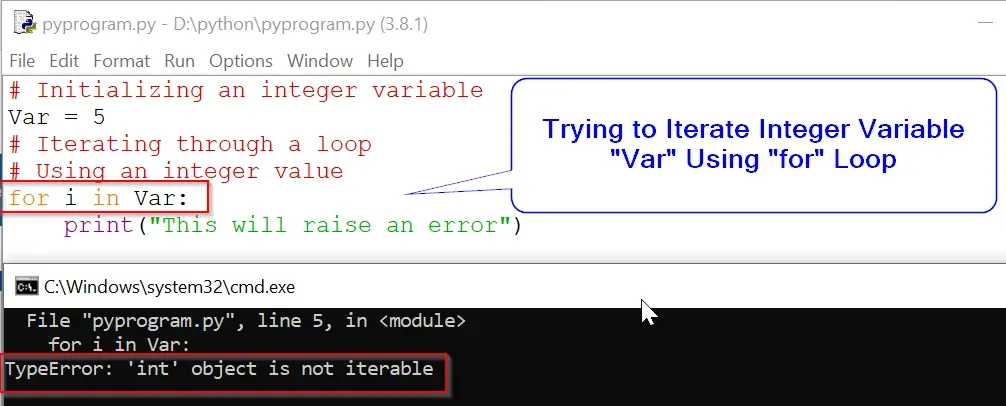



![TypeError 'int' object is not iterable [FIXED] Typeerror 'Int' Object Is Not Iterable [Fixed]](https://i.ytimg.com/vi/87X_9BTlgEU/maxresdefault.jpg)




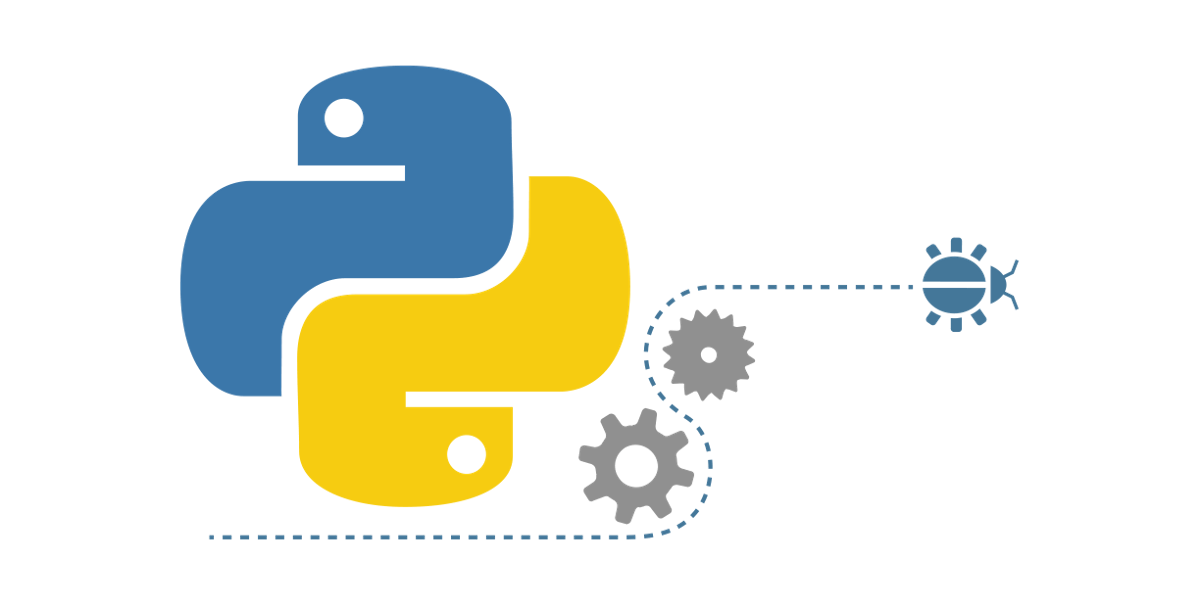
![Int Object is Not Iterable – Python Error [Solved] Int Object Is Not Iterable – Python Error [Solved]](https://www.freecodecamp.org/news/content/images/2023/01/kolade-recent.jpg)




![Python]파이썬 for문 Python]파이썬 For문](https://img1.daumcdn.net/thumb/R800x0/?scode=mtistory2&fname=https%3A%2F%2Fblog.kakaocdn.net%2Fdn%2FyNU2A%2FbtsecuNga2Q%2FlXDZ9DGhCGahqszThxpmvK%2Fimg.png)



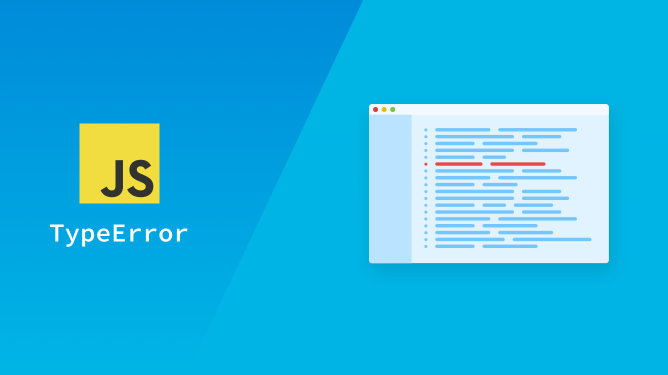




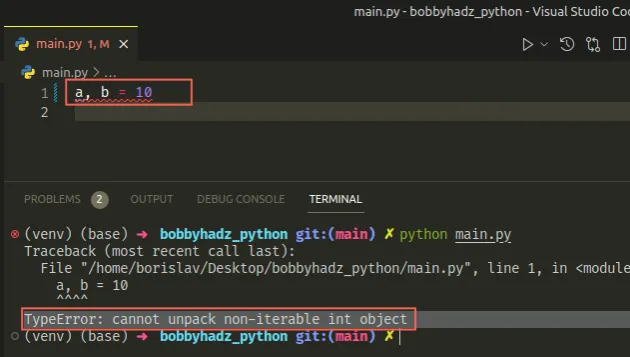






![파이썬]TypeError: 'int' object is not iterable 파이썬]Typeerror: 'Int' Object Is Not Iterable](https://img1.daumcdn.net/thumb/C176x176/?fname=https://blog.kakaocdn.net/dn/KKADS/btrg8Xzf1Mk/VRJUpUKkMsjkE2vyuKZwm1/img.png)













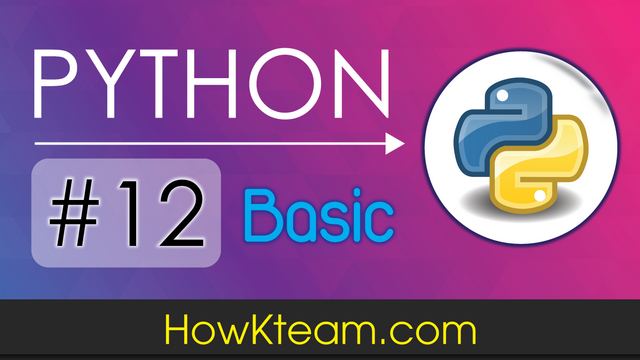
Article link: typeerror: ‘int’ object is not iterable.
Learn more about the topic typeerror: ‘int’ object is not iterable.
- Int Object is Not Iterable – Python Error [Solved]
- How to Fix TypeError: Int Object Is Not Iterable in Python
- Why do I get “TypeError: ‘int’ object is not iterable” when trying …
- How to Fix TypeError in Python: NoneType Object Is Not Iterable
- Typeerror: int object is not callable – How to Fix in Python – freeCodeCamp
- How to Fix the Python TypeError: ‘int’ Object is not Iterable
- How do I fix an “‘int’ object is not iterable” error? – Codecademy
- Python typeerror: ‘int’ object is not iterable Solution
- Fix Python TypeError: ‘int’ object is not iterable – sebhastian
- TypeError: ‘int’ object is not iterable – Odoo
- How to fix the Python TypeError: ‘int’ Object is not Iterable
- TypeError: ‘int’ object is not iterable in Python – STechies
See more: nhanvietluanvan.com/luat-hoc